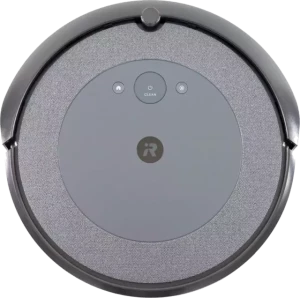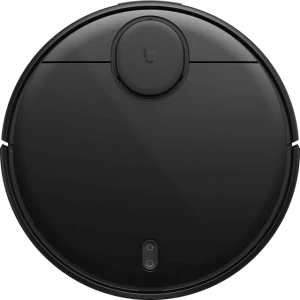Xiaomi Mi Robot can clean all floor types, this comes in handy, as different rooms inside a home may have various types of flooring i.e. carpets. If a robot vacuum is said to be able to clean all floor types, it means that the robot vacuum is designed and equipped to clean flooring materials without any limitations.
Xiaomi Mi Robot has an obstacle sensor, such a sensor serves the purpose of detecting and identifying obstacles in the robot's path, this allwos it to navigate around them thus avoiding collisions. Also, the iRobot Roomba i3 has an obstacle sensor, obstacle sensors work together to provide the robot vacuum with a better understanding of its environment, enabling it to navigate around furniture, walls, and other objects when cleaning a room thus preventing damage to both the robot and its obstacles. Xiaomi Mi Robot's dustbin capacity is at 0.4L, dustbin capacity determines how much dust, dirt, and pet hair the robot vacuum holds before it can be emptied.
iRobot Roomba i3, at 0.4L
has the same dustbin capacity as the Xiaomi Mi Robot
The dustbin capacity varies widely among robot vacuum models, and the size you choose should be based on your cleaning needs and the size of the area you want to clean. The Xiaomi Mi Robot weighs 0.4kg, robot vacuums are commonly designed to be lightweight and compact for easy maneuverability and portability. The iRobot Roomba i3, at 4.3kg
weighs more than the Xiaomi Mi Robot with a difference of 3.9kg.
It's important to consider the weight of the robot vacuum when getting a model, especially if you plan to carry it up and down stairs
Xiaomi Mi Robot has a width of 345mm, often referred to as its cleaning path width, refers to the width of the area that it can effectively clean in one go. The width of a robot vacuum is key as it can affect its efficiency and the duration it takes to clean a space
The iRobot Roomba i3, at 337mm
measures less in width than the Xiaomi Mi Robot by 8mm. A wider cleaning path can cover more ground in a single pass, shortening the time it takes to clean a room.
Xiaomi Mi Robot's height measures 96mm, here you are considering the measure from the bottom to its highest point. Height is a key consideration, especially if you have furniture with limited clearance in your home. iRobot Roomba i3, at 92mm
measures less in height than the Xiaomi Mi Robot by 4mm.
When selecting a robot vacuum, ensure that the robot vacuum can fit under the furniture and navigate effectively in your living space without getting stuck or causing damage. The battery power of a robot vacuum cleaner is important as it determines how long the vacuum can operate on a single charge. Battery capacity is measured in milliampere-hours (mAh), Xiaomi Mi Robot's battery power is 5,200mAh
The iRobot Roomba i3, at mAh1,800
has less battery power than the Xiaomi Mi Robot by only
A bigger capacity implies longer battery life which can be beneficial if you have a large space or if you would like the robot vacuum to complete cleaning cycles with less interruptions to recharge.
The operating time of the Xiaomi Mi Robot refers to the amount of time the vacuum can clean continuously on a single battery charge before it needs to return to its charging dock for recharging. Xiaomi Mi Robot's operating time is 2.5h
iRobot Roomba i3, at 1.25h
spends less time than the Xiaomi Mi Robot with a difference of only 1.25h
Always plan cleaning cycles around the vacuum's operating time to maximize efficiency and prevent "incomplete work" between charge intervals. Xiaomi Mi Robot has a charge time of 4h, the charge time of a robot vacuum cleaner refers to the amount of time it takes for the vacuum's battery to recharge fully after it has been depleted during a cleaning cycle.
iRobot Roomba i3, at 5h
charges for longer than the Xiaomi Mi Robot by 1h. Charge time is an important factor to consider when choosing a robot vacuum, as it determines how long you'll need to wait before the vacuum begins its next cleaning cycle. This is the amount of electrical power the vacuum uses while it's actively cleaning your home.
Xiaomi Mi Robot has a power consumption of 55W, power is often measured in watts (W) and changes among different robot vacuum models based on several consuption factors. That's right, many modern robot vacuum cleaners can mop floors in addition to vacuuming. Such robot vacuums are often referred to as robot vacuum and mop models and Xiaomi Mi Robot is one of those robot vacuums
This feature allows you to command a robot vacuum to focus on cleaning a particular area in your home, the Xiaomi Mi Robot supports this, which can be particularly useful for dealing with particular area messes or busy areas.
Xiaomi Mi Robot supports a smartphone app, through which you can control and monitor the vacuum without getting to it physically but through your smartphone or tablet. Both the iRobot Roomba i3 and Xiaomi Mi Robot have mobile application support, this enhances the user experience by providing convenience, and ease update of features and functionalities. This feature in robot vacuum cleaners is intended to eliminate the chance of the robot vacuum getting trapped during cleaning.
Robot vacuums such as the Xiaomi Mi Robot are equipped with various sensors and technologies to move around obstacles and avoid getting trapped, however the effectiveness of this feature can vary among different models. Both the iRobot Roomba i3 and Xiaomi Mi Robot have the "anti-stuck" feature, but clearing clutter, ensuring proper cable management, and creating clear paths for the vacuums can help further eliminate the chances of becoming stuck during cleaning. These virtual barriers are typically set up and controlled through the robot vacuum's mobile app, similar to no-go zones, these barriers are designed to help you control and restrict where the robot vacuum can and cannot go during cleaning.
Xiaomi Mi Robot has a route mapping feature that enables it to create a map of your space and plan efficient cleaning routes. This mapping capability improves the vacuum's ability to clean effectively and systematically. Route mapping is an important feature as it enables robot vacuums such as the iRobot Roomba i3 to adapt to the layout of your space to clean more efficiently and minimize the chance of missing certain spots.
Voice prompts are audible messages that the vacuum emits to provide you alerts on the different states of the vacuum. Xiaomi Mi Robot supports this feature
The iRobot Roomba i3 also supports voice prompts, this feature is useful for you who like audible notifications or users who have visual impairments. Auto-docking is a feature that refers to the vacuum's ability to autonomously return to its docking station when predetermined conditions are met such as getting work done, battery running low, or any malfunction.
Both iRobot Roomba i3 and Xiaomi Mi Robot support this feature, considered a convenient feature because it makes sure that the robot vacuum keeps its charge and readiness for cleaning without requiring manual intervention. Most robot vacuum cleaners such as Xiaomi Mi Robot come equipped with an "anti-fall" feature. This feature is intended to save the robot vacuum from falling off stairs, ledges, or other elevated surfaces, ensuring its safety during operation.
This safety feature that is also available on the iRobot Roomba i3 is key in avoiding accidents and protecting the robot vacuum from damage. It gives you peace of mind knowing that the vacuum will not fall down a flight of stairs during its cleaning cycle. Xiaomi Mi Robot has this convenient feature, which enables you to set specific days or times of day for the robot vacuum to start working.
The scheduling feature in robot vacuums is specifically useful in maintaining a consistently clean space without the need for manual intervention. iRobot Roomba i3 too can be scheduled. Xiaomi Mi Robot has a remote control, allowing you to control the vacuum's direction and actions from a distance.

